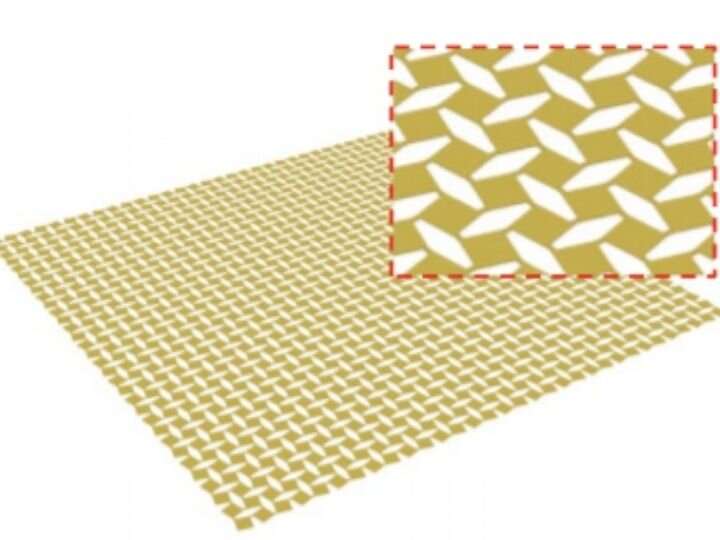Cunjiang Yu, Bill D. Cook Associate Professor of Mechanical Engineering at the University of Houston, is reporting the development of a camera with a curvy, adaptable imaging sensor that could improve image quality in endoscopes, night-vision goggles, artificial compound eyes and fish-eye cameras.
“Existing curvy imagers are either flexible but not compatible with tunable focal surfaces, or stretchable but with low pixel density and pixel fill factors,” reports Yu in Nature Electronics. “The new imager with kirigami design has a high pixel fill factor, before stretching, of 78% and can retain its optoelectronic performance while being biaxially stretched by 30%.”
Modern digital camera systems using conventional rigid, flat imaging sensors require complex and bulky lenses to correct optical aberrations. The curvy camera, like a human eyeball, on the other hand, can work with a single lens while correcting aberrations and offering other merits, such as a wide field of view and compact size.
Yu has shown that the curvy and shape-adaptive cameras with high pixel fill factors can be created by transferring an array of ultrathin silicon pixels with a kirigami design onto curvy surfaces using conformal additive stamp (CAS) printing, a manufacturing technology invented in his lab.
Kirigami is the Japanese art of paper cutting, similar to origami, or paper folding. Yu used the kirigami principal on a thin sheet of imaging sensors, making cuts which allows it to stretch and curve. Compared to other stretchable structure designs, such as thin open-mesh serpentine or island-bridge structures, this new kirigami structure has a much higher fill factor, meaning it retains high pixel density, creating better images.
Not only is the camera curvy, but Yu makes it shape-adaptive, enabling it to capture objects at different distances clearly.
“The new adaptive imager can achieve focused views of objects at different distances by combining a concave-shaped camera printed on a magnetic rubber sheet with a tunable lens. Adaptive optical focus is achieved by tuning both the focal length of the lens and the curvature of the imager, allowing far and near objects to be imaged clearly with low aberration.” said Yu, who is also a principal investigator of the Texas Center for Superconductivity at UH.
In CAS printing, an elastomeric, or stretchy, balloon with a sticky coating is inflated. It is then used as a stamping medium, pushing down on prefabricated electronic devices to pick up the electronics and print them onto various curvy surfaces.
Researchers report a new way to produce curvy electronics
More information:
Zhoulyu Rao et al, Curvy, shape-adaptive imagers based on printed optoelectronic pixels with a kirigami design, Nature Electronics (2021). DOI: 10.1038/s41928-021-00600-1
Provided by
University of Houston
Citation:
Using the ancient art of kirigami to make an eyeball-like camera (2021, June 28)
retrieved 28 June 2021
from https://techxplore.com/news/2021-06-ancient-art-kirigami-eyeball-like-camera.html
This document is subject to copyright. Apart from any fair dealing for the purpose of private study or research, no
part may be reproduced without the written permission. The content is provided for information purposes only.


